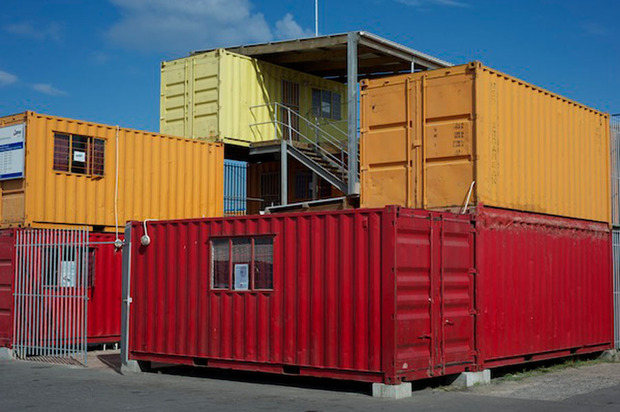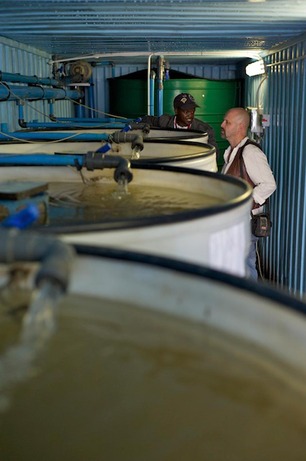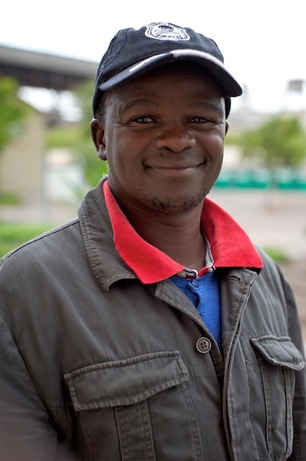The Fish Farm
Sustainable “aquaculture” in a shipping container

by Anton Crone

Among a number of sustainability initiatives underway in the townships of Cape Town, one of the most innovative we’ve discovered is “The Fish Farm,” a patented micro-intensive farm in a 40-foot shipping container. Containers have become synonymous with third world development. They are converted into houses, schools, banks, restaurants, cell phone recharge depots, hair salons, clinics and all sorts of other things. While a fish farm certainly seems a stretch, it begins to make sense when you realize the potential of this invention.


The inventor, Alan Fleming, a Director at The Business Place, has a dream to bring “aquaculture”—and thereby protein and profit—to the world’s poor. It came about because every fish farm Alan visited was different in design. “Here’s the normal model: bring in a highly paid consultant to design the farm, automate it and grow fish,” he explains. But Fleming changed that approach with a single design, repeated. This fish farm is lockable, transportable, affordable and profitable, with the aim to give the urban unemployed access to means of production right where they live, earn an income by farming and selling fish, bring affordable protein to Africa’s table and preserve our declining marine eco-system by growing fish in back yards.

Most significantly, the standardization of this aquaculture model means it is easier to train new farmers. Fish farmer Lungile Mafilika has been working with Fleming from the start and runs the container like, well, a tight ship. Originally a gardener, Fleming put Mafilika through aquaculture training while working on the first prototype, and he is now the key figure in the future implementation of fish farms to wherever the concept may expand. This particular prototype can produce two tons of tilapia per year and they will be harvesting their first half-ton of fish in October 2012. Mafilika is particularly excited about the next stage of the project, a new design with a much lower energy requirement and new tank designs. It will produce more, higher-quality protein at a lower cost, and is fully ready to enter the market with the $18,000 funding Fleming needs to launch it.











